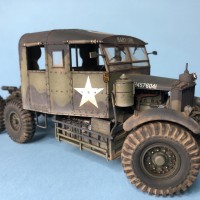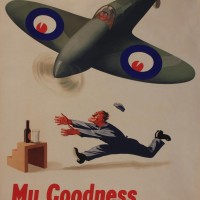Brengun MXY-7 Ohka, Models 11 & 22 (1/72)
The Yokosuka MXY-7 Ohka was a human-guided bomb used by Japan in the latter days of WWII. Translating to “cherry blossom”, its official name of “Navy Suicide Attacker” hardly evokes thoughts of delicate pink petals lazily drifting in the wind on a spring morning. The Ohka was carried under the wings of bomber aircraft to within range of the target: upon release, it would glide towards the target and then fire its short-range rockets, reaching speeds of up to 400 mph upon impact. While the Model 11 used three solid rocket engines, the Model 22 employed a jet engine for increased range; however, no Model 22's were ever used operationally.
The Ohka saw use in the Battle of Okinawa in 1945, where they succeeded in sinking or disabling multiple vessels, though no warships were ever struck. Ohka pilots were members of the 721st Naval Air Group, a unit of around 70 men specializing in kamikaze warfare. It's hard not to feel like the marginal operational gains weren't worth the sacrifice, especially considering that non-human-guided bombs (like the U.S. Navy's ASM-N-2 Bat) saw comparable successes.
The Kit
I was reminded of this unusual aircraft recently while visiting the Smithsonian's Udvar-Hazy Center, where they have an Ohka Model 22 on display. When I then discovered that Brengun makes a couple versions in my scale of choice (1/72), I decided to try them out. These are tiny little things, roughly the size of a 600 gallon drop tank, so there's not much to them. They don't offer much opportunity for extravagance or subtle effect, but they're an interesting piece of history and a nice addition to a WWII naval air collection.
Brengun offers the Model 11 and Model 22 as separate kits: the former has 22 parts in gray styrene, 12 resin parts, and one clear canopy; the latter has 18 parts in gray styrene, 11 resin parts, and one clear canopy. The resin parts primarily make up the wooden stands, as these things didn't have (or need) landing gear. The styrene fuselage and wings on both models have decent engraved detail and good fit. Decals allow for multiple different versions of the aircraft. Cockpits have minimal detail, but they're mostly not visible through the canopy.
The colors were tough to get right. The Model 11 called for IJN Gray (Mitsubishi) and generic gray-green, which seemed to match (and perhaps allude to) Mr. Color C56 IJN Gray Green (Nakajima); however, that turned out to be a little a too green. Meanwhile, my readings on the web seemed to suggest instead that the color is closer to AK Real Colors Duck Egg Blue (FS 35622). To confound things further, these things in reality came in a variety of shades of green, and so there wasn't a single standard color. I ended up trying to soften the C56 Gray Green on the Model 11 by mixing it 50:50 with the Duck Egg Blue. For the Model 22 I went with the straight Duck Egg Blue, mostly for the sake of variety, but also with a half-open eye towards historical accuracy.
Weathering was minimal, since, well, these things weren't exactly multi-use. A Tamiya Panel Liner pin wash was applied (Dark Gray on the Model 11, Gray on the Model 22), and a white oil wash was applied to the Model 22 to tone down the Tamiya wash.
These kits could have been improved with the inclusion of some photoetch, to account for delicate and detailed pieces like the bomb site mounted in front of the canopy, and the fuse tip. But, these pieces would be so small I would have been bound to lose them anyway. And, there's only so much detail one can add to a 1/72 kit before it gets obnoxious.












Nice Gems!
Very nice dual-build project - they look great!
Superb results, Brian! Great article, as well!
Really beautiful result on those tiny kits, Brian @bapowellphys
Nicely done, Brian.
These are really nice, Brian (@bapowellphys). I can't image what it was like to build and paint planes this small.
If I might correct a couple things: the Okhas were carried in the bomb-bay of a Betty bomber. There were three attack waves of Okhas during the Okinawa campaign in April and May,. Almost all of the attackers were shot down before they could launch their Okhas. . However, one was lunched and it sank the destroyer USS Mannert W. Abele - my father was the Chief Radar Technician aboard and survived the sinking. Okhas also damaged the bridge of the destroyer Shea and the destroyer Hugh w. Hadley was hit and damaged so badly that while she survived, she was "beyond repair." No other ships were hit, though some transports were originally thought to have been hit by them. Of the 300 Ohka available for the Okinawa campaign, 74 actually undertook operations, of which 56 were either destroyed with their parent aircraft or in making attacks. Fortunately the Japanese carriers Shinano and Unryu were sunk by US submarines while they had Okhas aboard, which were to be taken to the Philippines where they might have been more successful attacking ships from nearby island bases.
Nice models of something that really was "Baka" (stupid - the name US sailors gave them).
Great work on these tiny models.